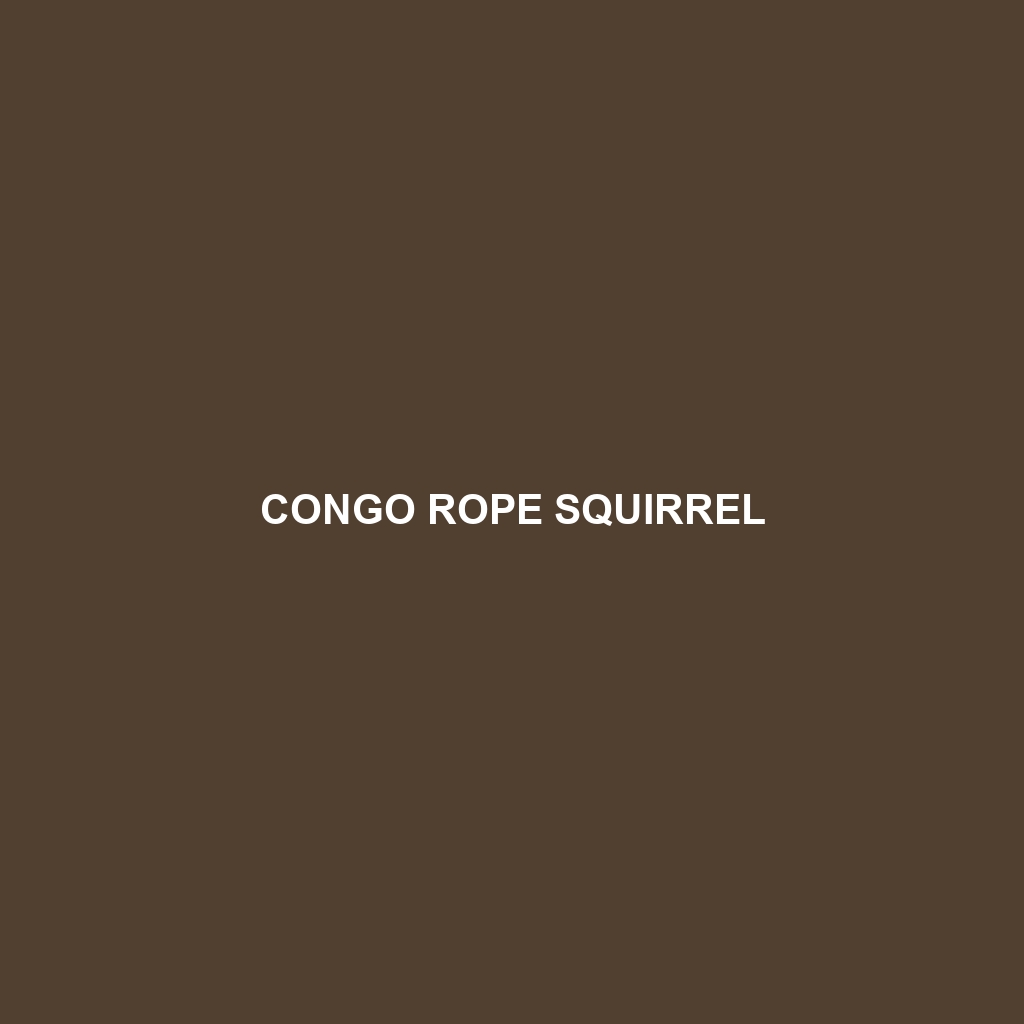Congo Rope Squirrel: A Comprehensive Overview
Common Name: Congo Rope Squirrel
Scientific Name:
Habitat
The Congo Rope Squirrel primarily inhabits the dense rainforests of Central Africa, with a particular concentration in countries like the Democratic Republic of the Congo and Gabon. These squirrels are typically found in lowland forests, where high humidity and a rich canopy environment provide ample shelter and foraging opportunities.
Physical Characteristics
Congo Rope Squirrels are medium-sized rodents that measure approximately 25 to 35 centimeters in length, excluding their long, bushy tails which can add another 20 centimeters. Their fur is predominantly a rich, dark brown with lighter underbellies, providing excellent camouflage among the forest foliage. A distinct feature of this species is its elongated, rope-like tail, which aids in balance during their acrobatic movements through the trees.
Behavior
This species is known for its arboreal lifestyle, spending most of its time in the treetops. The Congo Rope Squirrel is diurnal, meaning it is primarily active during the day. These squirrels engage in playful behaviors, such as chasing one another through the branches, which also serves as a way to establish social hierarchies. They are also territorial and will vocalize to communicate with others and defend their space.
Diet
The Congo Rope Squirrel is primarily herbivorous, feeding on a variety of fruits, nuts, seeds, and leaves. They play a crucial role in seed dispersal, which is vital for forest regeneration. Their diet is not only limited to plant matter but also includes fungi and insects, showcasing their adaptability in foraging behaviors.
Reproduction
Breeding typically occurs in the rainy seasons, between March and September. Female Congo Rope Squirrels give birth to litters of two to four offspring after a gestation period of about 45 days. The young are initially born blind and helpless but gain independence within a few months, learning essential survival skills from their mother.
Conservation Status
Currently, the Congo Rope Squirrel is classified as Vulnerable due to habitat loss from deforestation and poaching. Conservation efforts are crucial to ensure the survival of this unique species in their natural habitat.
Interesting Facts
One fascinating aspect of the Congo Rope Squirrel is its unique ability to move swiftly through branches, sometimes leaping distances of up to 3 meters. They are also known to create extensive nests made of leaves and twigs high in the trees, which serve as both hiding spots and nurseries for their young.
Role in Ecosystem
The Congo Rope Squirrel plays a significant role in its ecosystem as both a seed disperser and a prey species for larger predators. By consuming fruits and seeds, they facilitate forest growth, while their presence contributes to the biodiversity that maintains the delicate balance of their rainforest environment.
